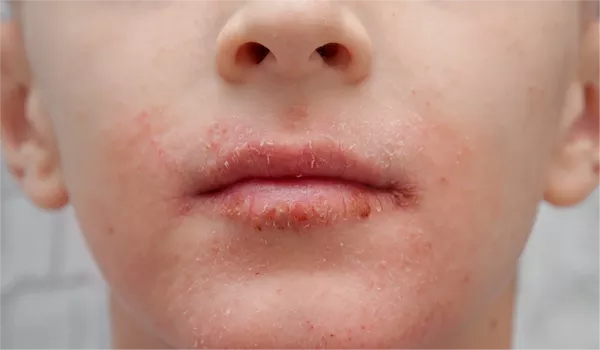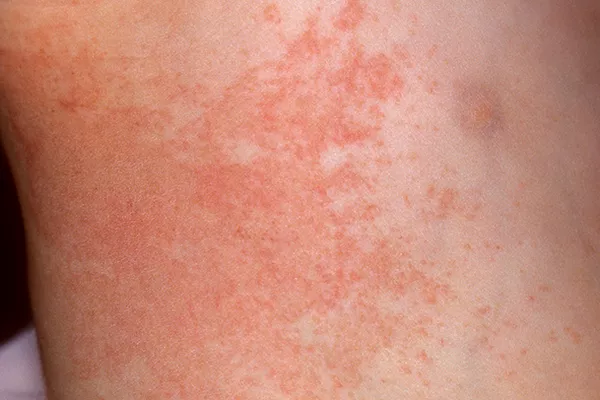Eczema, or dermatitis, encompasses a range of skin conditions characterized by inflammation, redness, itching, and sometimes blistering. One specific type, intrinsic allergic eczema, is an important subset with distinct features and triggers. In this article, we will delve into the intricacies of intrinsic allergic eczema, exploring its causes, symptoms, diagnosis, and management.
What is Intrinsic Allergic Eczema?
Intrinsic allergic eczema, also known as allergic contact dermatitis (ACD), is a type of eczema triggered by direct skin contact with a substance that provokes an allergic reaction. Unlike other forms of eczema such as atopic dermatitis, intrinsic allergic eczema is specifically induced by allergens that come into contact with the skin rather than by internal factors or systemic allergic reactions.
Causes and Triggers
The primary cause of intrinsic allergic eczema is exposure to allergens that trigger an immune response in susceptible individuals. Common allergens that can cause this type of eczema include:
- Nickel: Found in jewelry, clothing fasteners, and metal objects.
- Fragrances: In perfumes, cosmetics, and personal care products.
- Preservatives: Like formaldehyde or parabens in skincare products.
- Rubber: Especially latex, used in gloves, condoms, and certain clothing.
- Chemicals: Present in dyes, solvents, and other industrial or household products.
Exposure to these allergens leads to an allergic reaction in the skin, which manifests as eczema.
Symptoms of Intrinsic Allergic Eczema
The symptoms of intrinsic allergic eczema typically appear in the areas of skin that have been in direct contact with the allergen. Common signs and symptoms include:
- Redness: The affected skin becomes red and inflamed.
- Itching: Intense itching is a hallmark of allergic eczema.
- Swelling: The skin may swell, especially upon repeated exposure.
- Blistering: Small blisters or vesicles may develop.
- Dryness: The skin can become dry, cracked, and scaly.
- Oozing or Crusting: In severe cases, the skin may ooze fluid or develop crusts.
The severity of symptoms can vary depending on the individual’s sensitivity to the allergen and the duration of exposure.
Diagnosis
Diagnosing intrinsic allergic eczema involves a detailed medical history and physical examination by a dermatologist or allergist. Key steps in diagnosis may include:
- Patient History: The doctor will inquire about the patient’s symptoms, possible exposures, and previous allergic reactions.
- Patch Testing: This involves applying small amounts of suspected allergens onto the skin (usually on the back) using adhesive patches. The patches are left on for a specified period (usually 48 hours) and then examined for any signs of allergic reaction.
- Elimination Diets: In cases where food allergens are suspected, an elimination diet may be recommended to identify potential triggers.
- Blood Tests: Blood tests can measure specific antibodies related to allergic reactions, although they are less commonly used for diagnosing ACD.
Management and Treatment
The cornerstone of managing intrinsic allergic eczema is avoiding exposure to the triggering allergens. Once the allergens are identified through patch testing, patients are advised to:
- Avoid Contact: Take steps to minimize exposure to identified allergens. This may involve changing skincare products, avoiding certain fabrics or metals, and using protective gloves if allergic to latex.
- Substitute Products: Use hypoallergenic or fragrance-free alternatives for personal care and household products.
- Topical Treatments: Depending on the severity of symptoms, topical corticosteroids or calcineurin inhibitors may be prescribed to reduce inflammation and relieve itching.
- Moisturizers: Regular use of emollients or moisturizers helps to restore and maintain the skin barrier, reducing dryness and preventing flare-ups.
- Antihistamines: Oral antihistamines can be used to alleviate itching and improve sleep quality.
In cases of severe or persistent intrinsic allergic eczema, referral to an allergist or immunologist may be necessary for further evaluation and management.
Prognosis
The prognosis for intrinsic allergic eczema is generally favorable with proper identification and avoidance of triggering allergens. By taking proactive measures to minimize exposure and following a personalized skincare routine, individuals can effectively manage their condition and prevent recurrent flare-ups.
Conclusion
Intrinsic allergic eczema is a specific type of eczema characterized by an allergic reaction to certain substances that come into contact with the skin. Understanding the triggers and symptoms of this condition is crucial for effective management. Through proper diagnosis, allergen avoidance, and targeted treatment, individuals with intrinsic allergic eczema can achieve significant improvement in their skin health and quality of life. If you suspect you have intrinsic allergic eczema, consult with a dermatologist or allergist for a comprehensive evaluation and personalized management plan.
Related Topics:

























